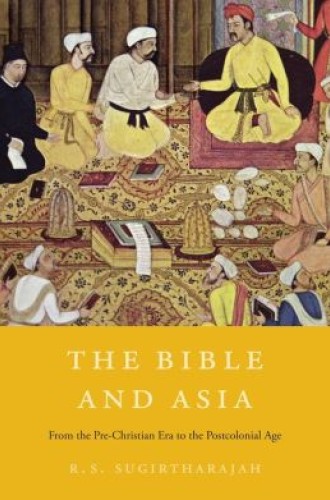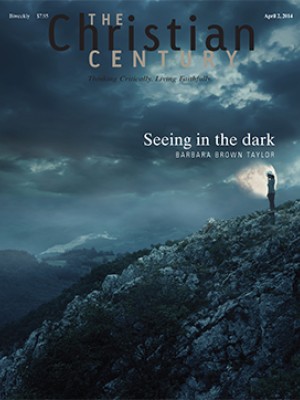Scriptures of the East
Christian theology is the product of complex cultural interactions. It first emerged from the encounter between Jewish and Hellenistic thought and later developed through contacts with Latin and Germanic cultures. For many Western thinkers, this Mediterranean-European synthesis is not just the best basis for understanding the faith but the only authentic one, and we must treat any later adaptations very cautiously for fear of lapsing into syncretism.
The problem is that Christianity has for many centuries been in contact with multiple non-European cultures, particularly in Asia, and believers in these settings have traveled far from supposedly obvious Western interpretations. As the faith comes to be established ever more firmly outside the Euro-American world, those cultural precedents become increasingly central to framing Christian faith.
Read our latest issue or browse back issues.
The lengthy history of Asian interpretations of faith is the subject of this thoughtful and provocative collection of essays by veteran postcolonial scholar R. S. Sugirtharajah, professor emeritus at Birmingham University in England. Common themes emerge powerfully across the broad sweep of historical periods from the second century to the 21st.
Central to Sugirtharajah’s argument is the massive contrast between the political and cultural roles of Christianity in Europe and Asia. When Christianity arrived in such critical Asian lands as India (in the second century) and China (perhaps before the fourth century), it came without any trappings of political power or imperial diktat. Not only were Christians in no position to impose their views, but they bore no aura of imperial glory that could afford them prestige or protection. At best they could hope for toleration.
They could not claim any significant cultural advantage either. In barbarian Europe, Christianity was not just an alternative religion, it was radically and startlingly different from all its predecessors in that it was grounded in written scriptural texts. (Judaism was not a plausible rival in these northern realms.) Christianity arrived together with literacy, and over time new converts integrated its astonishing documents into their heritage.
How utterly different was the experience in Asia, where cultures were already defined by ancient scriptural traditions, whether Hindu, Buddhist, Confucian, or Daoist, and where Christian texts were barbarous upstarts. It was imperative for Christians to define their relationship to these older faiths, which could not be dismissed as diabolical impostures. Christianity could not establish itself in a literate culture in the same way as it did in a primal, nonliterate setting. The church had to engage with Asian scriptures and sutras.
But how far should such engagement go? Over the centuries, it has often been tempting to present these native traditions as in some sense a foundation for Christianity, a praeparatio evangelica, or even as a kind of Old Testament precursor to the Christian Bible. Repeatedly such attempts at harmonization have been challenged as heretical or syncretistic, but they keep appearing. The last theologian to dare such an integration has not yet been born.
Sugirtharajah is correct to stress the very early Asian contexts of Christianity, histories that Western scholars have often neglected. It has to be said, though, that his opening chapter about Asian presences in the Bible is his least convincing. Although Eurocentric scholars might indeed have operated a “hermeneutics of omission” in such matters, we cannot rectify this problem by grasping at tenuous resemblances of name. For example, Sugirtharajah contends that the prince Carshena, referred to in Esther 1, is a veiled form of the Hindu Krishna—and not just a royal figure of that name, but the deity himself. I disagree.
The author is on much firmer ground when he notes the many resemblances between tales and motifs found in the Bible and the commonplaces of Asian storytelling, echoes that would make scripture more appealing and comprehensible to new Christian converts. He reminds us that the apostolic age was an era of wide global connections, and both pagan and early Christian writers showed a surprising awareness of South Asian customs. Claims about South Asian influences in the New Testament are not impossible, but they do have to be proven.
One of Sugirtharajah’s great strengths is his ability to see both sides of the mirror, to report on both Christian perspectives of Asian faiths and the reciprocal gaze of Asian believers. In the first category, he traces the surprisingly common efforts of British and French imperial scholars to interpret Indian and Chinese sacred texts. Most claimed parallels between the different scriptures, but a few went much farther. Louis Jacolliot (1837–1890) came to regard the Vedas as the source of the Bible, which he saw as at best a poor imitation of authentic Eastern wisdom.
If these Westerners could be dismissed as eccentrics, some of the book’s Asian subjects enjoyed a far more profound and lasting influence. Rammohun Roy (1772–1833), for example, was a leading reformer of Hinduism and one of the shapers of the faith as it exists today. Roy was fascinated by the Bible and especially by the person of Jesus, and he had a deeply impressive grounding in the classical languages of both Europe and India. He became a prestigious New Testament scholar and composed a harmony of the Gospels. It was through the influence of Roy and his disciples that modern Hindus came to focus on one brief scripture, the Bhagavad Gita, as the core of their tradition and a counterpart to the New Testaments being dispensed so generously by Christian missionaries. (Buddhists likewise responded to missionary endeavors by promoting the Dhammapada as a brief, one-volume epitome of their faith.)
In another case, the biblical influence proved less benevolent. In 19th-century China, Hong Xiuquan used the New Testament to interpret his disturbing visions. Deciding that he was Jesus’ younger brother, he embarked on a mission that was political as much as religious: to create a worldly kingdom of heavenly peace called Taiping. In the resulting rebellion, tens of millions were killed—at a time when the global population was perhaps only a seventh of what it is today. By that numerical standard it was the worst catastrophe in human history, and biblical misinterpretation contributed substantially to it.
In the chapter on Christian and biblical references in contemporary Asian fiction, Sugirtharajah rightly devotes pride of place to Sarah Joseph’s biblically suffused Malayalam novel Othappu (“Scandal”), a close counterpart to the great English Victorian novels of faith and doubt. His list also includes such works as Gish Jen’s World and Town, Paul Zacharia’s What News Pilate? and the widely praised Jewish-Indian novels of Esther David. This chapter suggests the possibility of teaching a course on contemporary Christian fiction drawn entirely from non-Euro-American traditions. For that inspiration alone I am grateful.
Sugirtharajah concludes with some bold assertions about Asian Christianity:
Most of the time, the Bible has to be read against the indigenous religious texts. . . . When an Asian Christian reads the Bible, he or she does not read it alone but alongside something else. It has always been the Bible plus the Bhagavad Gita or the Dhammapada or the Analects. Read in Asia, the Christian Bible needs to be illuminated by other textual traditions in order to gain credibility and relevance.
That need for the “Bible plus” was of course greatly enhanced by the historic linkage between missionary Christianity and imperial rule, and those memories are already fading. Yet the basic point about the continuing conversation between faiths, and between scriptures, remains highly valid.
We are fortunate to have this valuable guide to the ongoing debates.







